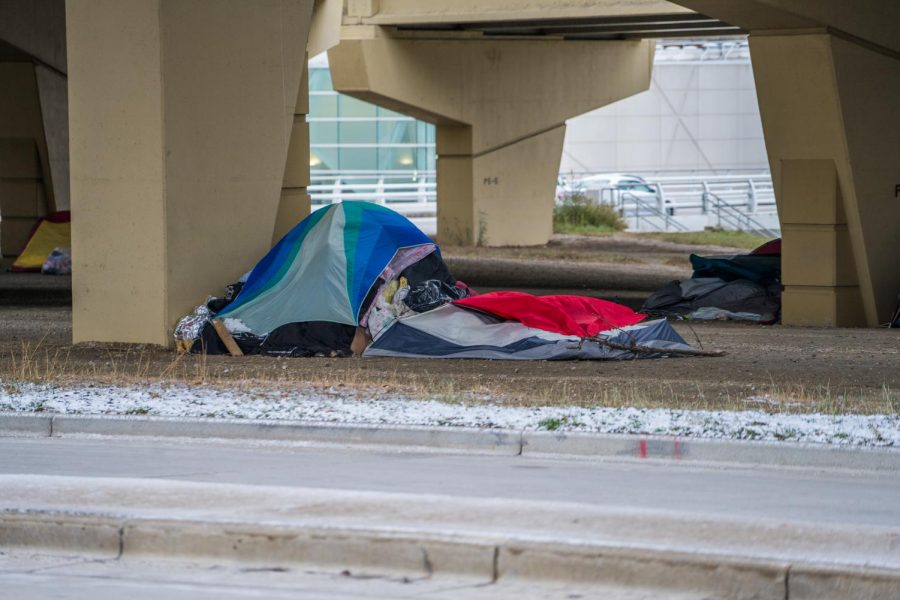Marquette closed for two and a half days, last week. The build-up of snow and record low temperatures encouraged administration to cancel classes, extracurriculars and sports — as well as shorten dining hall, gym and library hours.
These extreme cold temperatures brought to light the necessity of warming shelters for the homeless, but we should not abandon this conversation after the polar-vortex ended.
While the university was in session, going to class during the Tuesday of the “polar vortex” was brutal. According to the National Weather Service, it could take as little as 10 minutes to start feeling the effects of frostbite. In fact, the Journal Sentinel released an article about how Milwaukee was as cold as Antarctica last Wednesday.
Even with the cold, individuals were waiting at bus stops in the frigid temperatures, enduring delayed times certain days due to the weather.
Officials in Milwaukee urged the homeless and at-risk homeless to take refuge in warming shelters opened for last week’s brutal weather.
In Milwaukee, there are about 1,000 people currently homeless and living in shelters, making last week’s situation dire. Addresses of warming shelters were on people’s Snapchat stories and word was also spread by mouth.
With the extremely cold temperatures, providing warming shelters is vital for a city like Milwaukee. A slight raise in temperature this week should not cause us to look past the long-term solutions needed to house the homeless during winter months.
Milwaukee has the highest poverty rate in Wisconsin at 18 percent, according to Wisconsin Public Radio article about a new supplemental report recently released. With poverty usually comes a lack of basic necessities, including shelter.
Milwaukee needs more housing shelters like Guest House and Friendship House, which allow clients to stay for a set amount of time, while also working to find individuals and families long-term permanent housing. Guest House offers 86 beds for homeless men each night, while Friendship House offers a home to families and single women. Friendship House also has a strict number of available rooms each night, as families or women usually stay at Friendship House for a longer amount of time, according to their website.
If an individual is in a rough situation they can call 2-1-1 for help. Their needs are then ranked along with others who call to see who needs the shelter more. Unfortunately, with limited resources, this is the program that seems to be the most effective compared to just letting anyone into the shelter. Milwaukee needs to make transitional housing and more shelters to house the about 1,000 homeless people who may need a warm place to stay a priority in our city, by focusing funding and resources to these people.
Another option is addressing the issue of poverty from its root. Homelessness is a symptom of a larger problem. Obviously, it is helpful to put Band-Aids over symptoms and better the lives of those being affected. But, with Milwaukee being one of the most segregated cities in America, it is important to look at racism and segregation as bigger issues that need to be addressed. There is no clear-cut solution that will fix everything, but moving businesses into food deserts with little to no resources is a vital place to begin. Initiatives like this have already been started through the Near West Side project.
Last week, the frigid temperatures shed light on a problem in Milwaukee that needs solving. Everyone deserves basic shelter and warmth.



